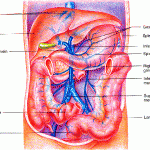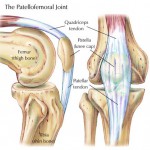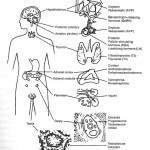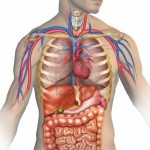Basics of human anatomy is a subject that introduces various components of the human body. Principally, there are two types of human anatomy, one that you can see with your naked or unassisted eye and the other includes all components that you have to see with an assisted eye or using microscopes and other devices. The former is referred to as gross anatomy and the latter is known as histology or microscopic anatomy.
Human anatomy can be divided into distinct components such as the head, neck, trunk, arms and legs. Here, the trunk includes the thorax which is the chest area and the belly region and the abdomen, the arms include the hands and the legs include the feet. This is the absolute basics of human anatomy as one sees it. There are vital organs, vital systems, biochemical processes, cellular processes and composition of the human body pertaining to various elements present such as oxygen, carbon, hydrogen, nitrogen, calcium, phosphorus, potassium, sulphur, sodium, chlorine, and magnesium among many others.
The vital systems in the human anatomy include the nervous system, circulatory system, respiratory system, digestive system, urinary system, reproductive system, endocrine system, lymphatic system, muscular system, skeletal system and integumentary system.
Nervous system comprises of the brain, the peripheral nervous system, the nerve cells known as neurons and the nerves that connect every part of the body to the brain. The nervous system also includes the spinal cord.
The circulatory system comprises of the heart, the blood vessels and blood.
Respiratory system comprises of the lungs, diaphragm, pharynx, larynx and bronchi. Digestive system comprises of the stomach, liver, pancreas, salivary glands, gallbladder and intestines.
The urinary system comprises of the kidneys, urinary bladder and urethra. The muscular system comprises of all the muscles in the human body. The skeletal system comprises of all the bones in the human body.
The endocrine system comprises of thyroid, pituitary gland, hypothalamus, pineal gland, adrenal gland, parathyroid and essentially all the endocrine glands.
Reproductive system comprises of the sex organs in the human body meant for procreation such as the ovaries, uterus, fallopian tubes, mammary glands, vagina, testes, seminal vesicles, vas deferens and prostate.
The lymphatic system comprises of the blood stream, tissues, lymph and the lymph nodes. The Integumentary system comprises of skin, hair and nails.
There are many vital or important organs in human anatomy including but not limited to brain, heart, spinal cord or the entire vertebral column, lungs, liver, stomach, kidneys, intestines, pituitary glands, eyes, ears, nose, thorax, the respiratory tract and the reproductive organs among others. There are 206 bones in the human body and depending on the grouping of muscular systems there are 640 to 850 muscles.
The human anatomy is one of the most complicated subjects as a lot has been explored and established but a lot is yet to be known. Regarded as the most complicated anatomies of all living creatures, the human body is still a mystery despite the encyclopaedic information we already have.



